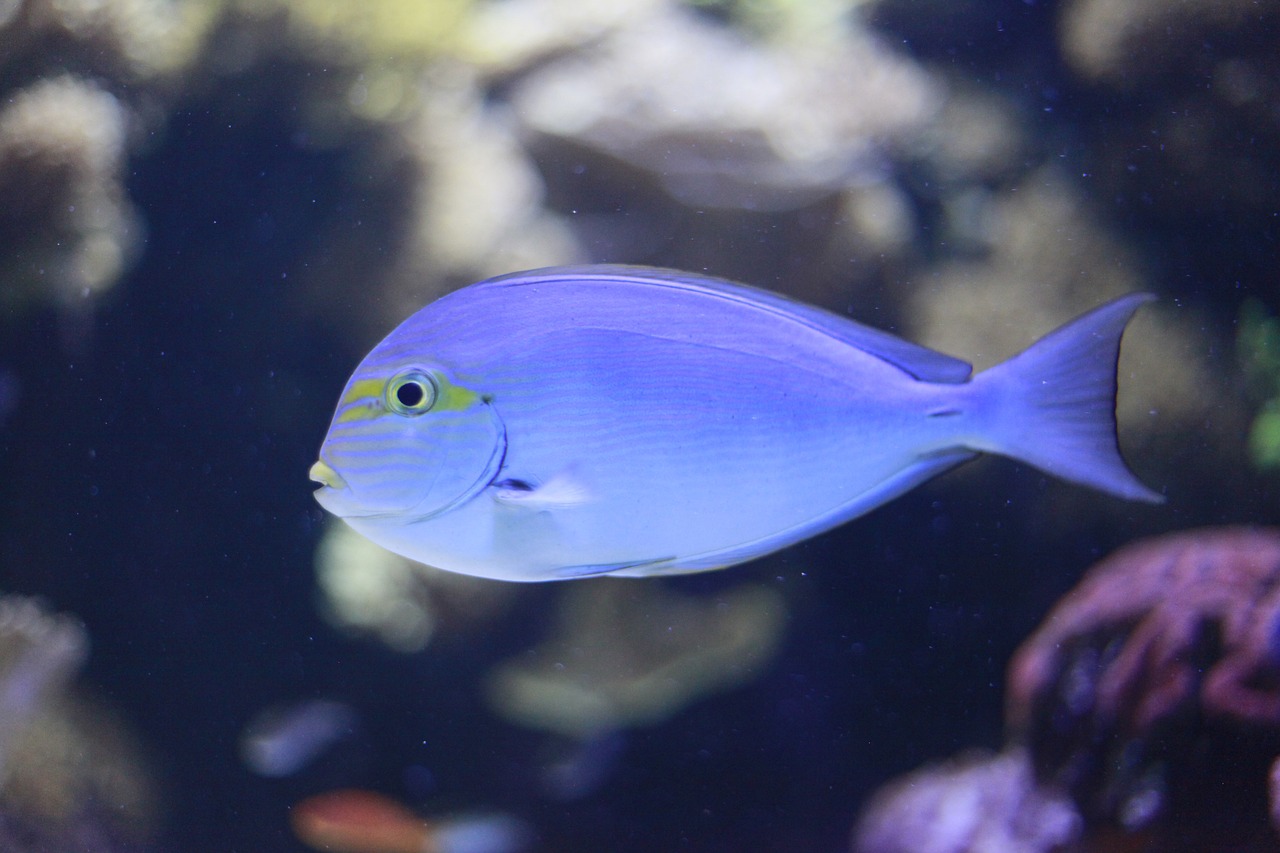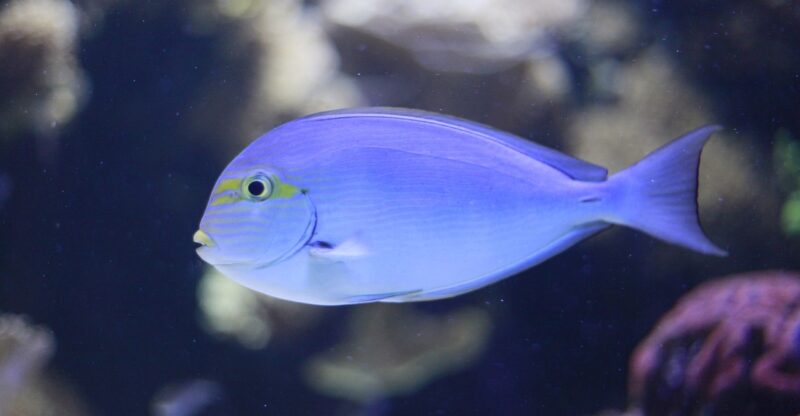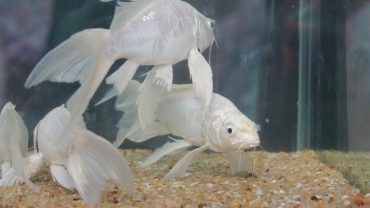Can A Fish Tank Clean Itself?
Fish tanks require proper care and consistency when it comes to cleaning and maintenance. This can be a bit challenging if you are busy or have multiple fish tanks to take care of.
So it’s understandable to wonder whether a fish tank can clean itself. Can you set it on auto-pilot and enjoy the view without any of the work?
In this article we explain whether a fish tank can clean itself and what, if anything, you need to do to keep it clean.
Can A Fish Tank Clean Itself?

A fish tank can get dirty pretty quickly especially if you have several fish inside. Fish waste combined with leftover food build up at the bottom of the aquarium.
If you don’t clean out the debris, ammonia and nitrites build up in the fish tank and quickly kill off your fish.
The biggest task when it comes to cleaning and maintaining a fish tank is cleaning up fish waste and uneaten fish food.
Typically, there are three ways you keep a fish tank clean: installing a filter, doing regular water changes and vacuuming the substrate.
With most fish tanks, you need to do all three to maintain a healthy environment for your fish.
Even if you have a great filter, debris still builds up on or under the substrate and can cause problems for your fish. You’ll still need to occasionally vacuum the substrate and change the water.
Is there a way you can keep an aquarium healthy without vacuuming or water changes?
Based on my experience and that of other aquarium owners, the answer is generally no. Most fish tanks require regular water changes and vacuuming. But there are exceptions.
You can design a fish tank that self-cleans using plants. Other fish tanks rely on just a filter to stay clean. You can also get a self-cleaning fish tank that automatically syphons away debris.
Types of Self-cleaning Fish Tanks
Gravity-based Self-cleaning Fish Tanks
These self cleaning fish tanks use gravity to keep the fish tank clean.
Debris collects at the bottom of the fish tank. In some fish tanks, the bottom is sloped in such a way that debris settles in a specific area.
A tube or pipe leads from the bottom of the fish tank and comes out from a hole at the side of the aquarium.
When you add water to the fish tank, debris-filled water from the bottom automatically goes up the tube and pours out from the side of the fish tank.
So all you need to do is occasionally add water to the fish tank. You don’t have to change the water or vacuum the substrate.
Here’s a video showing how it works.
In reality, however, gravity-based fish tanks don’t work as well as advertised. Most users say they still have to frequently change the water since the self-cleaning mechanism doesn’t remove all the debris.
Adding new water to the fish tank may also not be enough to maintain the right chemistry. Regularly changing the water is the best way to keep ammonia and nitrites at zero and nitrates at a safe low level.
Another limitation of gravity-based self cleaning is that it is limited to very small aquariums, usually 1-gallon betta fish tanks.
Aquaponic Fish Tanks
Plants are excellent natural cleaners. That’s why some consider planted fish tanks easier to maintain compared to conventional ones.
Aquaponic fish tanks use plants to automatically clean the water. Instead of having plants in the aquariums, as is the case with planted fish tanks, aquaponic aquariums have a grow bed on top of the fish tank.
The main advantage of this design is that you can grow non-aquatic plants in your aquarium. You can plant herbs, micro greens and various vegetables. Essentially, a 2-in-1 aquarium and kitchen garden.
Aquaponic fish tanks cycle water, typically using a small pump, from the fish tank, up to the grow bed and back into the fish tank.
As the water passes through the garden bed, the plants absorb the ammonia and nitrates. You can add a biological substrate to the garden to help convert ammonia and nitrites, and to filter out solid waste.
Here’s a video of how an aquaponic fish tank works.
An aquaponic self-cleaning fish tank works better than a gravity-based one. Many fish tank owners who’ve tried it say they go longer between water changes. You can also use the aquaponic self-cleaning method in larger 10-gallon or more aquariums.
But it also has several downsides.
- A complete aquaponics kit, including the fish tank and garden bed, is pricey.
- The garden bed takes up a lot of space. This is an issue if you want to install other accessories such as a heater, filter or light.
- In many cases, the garden bed is not enough to keep the water clean. You still need a filter. You may also need to change the water and vacuum the substrate, though less frequently than before.
- Requires careful monitoring of water chemistry to ensure everything is okay. Some owners say an aquaponic self-cleaning system actually makes maintaining a fish tank more tedious than before.
Planted Fish Tanks
If an aquaponic fish tank seems too much of a hassle or if it’s outside your budget, consider a planted fish tank. This is where you add plants right into the water.
A planted fish tank is largely self-cleaning. The plants do a great job breaking down and using fish and food waste. They also prevent a build-up of ammonia, nitrites and nitrates.
If you have a heavily planted fish tank, you don’t need to vacuum the substrate. In fact, vacuuming can damage the plants and mess up water chemistry.
But you still need to have a water filter. A cheap sponge filter will do since you only need mechanical filtration. The plants handle dissolved organic materials.
You also need to occasionally change the water. This not only protects your fish, but also maintains the right water balance for the plants.
So even planted fish tanks are not wholly self-cleaning, though they make fish tank maintenance easier.
How To Keep A Fish Tank Clean

As we’ve seen, even so-called self-cleaning fish tanks still need some cleaning whether it’s water changes or vacuuming.
No matter what kind of fish tank you have, it’s important that you know how to keep it clean. Here are some tips.
Fish Tank Filter
A filter is the first line of defence when it comes to protecting your fish from debris and toxic chemicals. A good fish tank filter combines mechanical, chemical and biological filtration.
Mechanical filtration removes particulates and solid waste from the water. This includes bits of food and fish waste.
Chemical filtration removes dissolved organic compounds from fish waste such as phosphate. Most fish tank filters use activated carbon for chemical filtration.
Biological filtration is not so much filtration as it is a conversion. Bacteria growing on the filter medium convert ammonia in the water to nitrites and then nitrates.
Regular Water Changes
Most self-cleaning methods and systems are not enough to maintain the right chemistry in your fish tank.
You still need to change the water occasionally to dilute dangerous chemicals and restore the good stuff such as minerals.
How often you change the water depends on how heavily stocked your fish tank is and whether you are using any self-cleaning system.
If you have an aquaponic fish tank, you can go for months without changing the water. If you have a regular fish tank, you need to change the water every 1-2 weeks.
The most important thing is to run frequent water tests. This will let you know when the water chemistry is starting to get out of balance.
Over time, you’ll have a good idea of how long you can safely go between water changes.
Run Your Aquarium The Right Way
A lot of problems with fish tanks arise because many owners don’t know how to run an aquarium properly.
One common mistake is to have too many fish in a fish tank. Even if you have a good filter or self-cleaning system, there will still be too much fish waste and it will mess up the fish tank.
Another common issue is overfeeding. This results in excess fish waste and leftover food.
Don’t Forget The Outside
The outside of your fish tank doesn’t clean itself. You need to clean it regularly to keep it free of streaks, stains and dirt.
The easiest and safest way to clean the outside of a fish tank is using vinegar. Make a 50:50 white vinegar and water solution and spray it on the aquarium. Wipe the aquarium with paper towels.
Vinegar is great for removing stains and watermarks, and doesn’t leave streaks. Don’t worry if a bit of it gets inside the fish tank; it is safe.
Bottom Line
So, can a fish tank clean itself?
Yes, it can through several ways such as using plants or a gravity system. However, these methods are usually not enough on their own to keep a fish tank perfectly clean.
The best way to think about them is that they make cleaning and maintaining a fish tank easier. You’ll still need to do the usual stuff like changing water, vacuuming debris and changing/cleaning the water filter.





